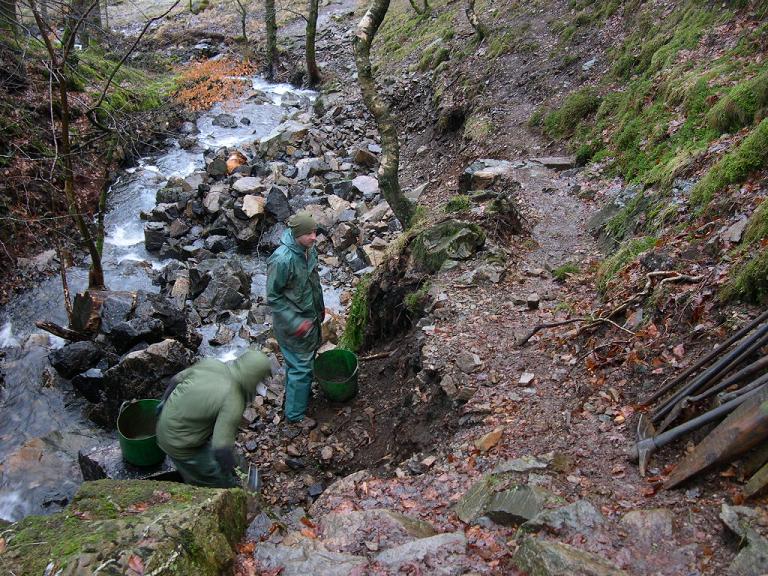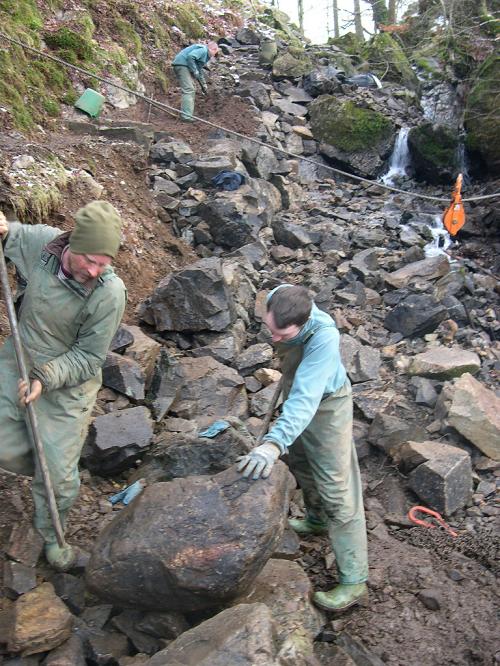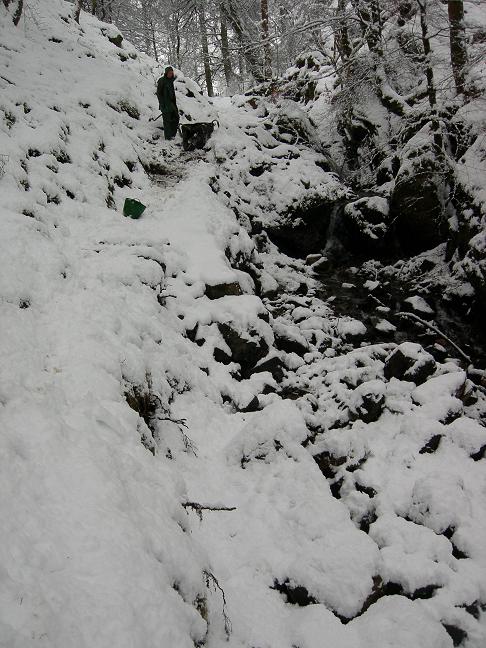

Mt. Rosea Staircase - First Stage
|
Tom Ghyll Flood Damage Restoration In November 2009 Cumbria experienced the worst flooding in British history. Within the South Lakes National Trust area a thirty metre section on the popular Tom Ghyll footpath was completely destroyed. It was decided to rebuild a section of the damaged path using local stone to form a retaining wall whilst the the remaining section would be re-routed to a higher, less flood prone level using benching techniques. |
|
|
|
|
|
|
|
| Foundation The initial stage involved digging a deep foundation to ensure the planned retaining wall would withstand future flooding. |
|
|
|
|
| Winching The large foundation stones were moved into place with the aid of winches. |
|
|
|
|
| Sky-line After the foundation stones were laid, an overhead cable system was used to lift the remaining large boulders into place. As the site was inaccessible to heavy machinery, this system was invaluable in obtaining the large amounts of material required in a safe, timely and environmentaly sensitive manner. |
|
|
|
|
| Stone Placement Once a boulder was on the wall the basic principles of construction were followed - the stone being laid lengthways into the wall, ensuring good contact was made with the stones directly below it and the joins crossed. |
|
|
|
|
| Inclement Weather At times the winter conditions made progress on the project difficult. During periods of deep snow we focused on moving boulders in the snow-free stream closer to the wall in readiness for construction once the snow cleared. |
|
|
|
|
| Reopening With the wall construction and re-route completed the public were once again able to safely access this popular and environmentally significant area. |
|
|
|
|






